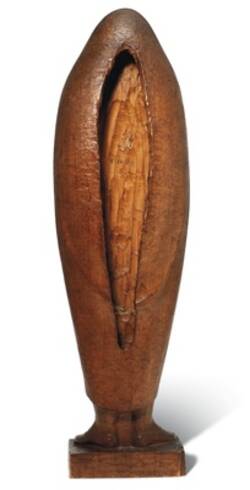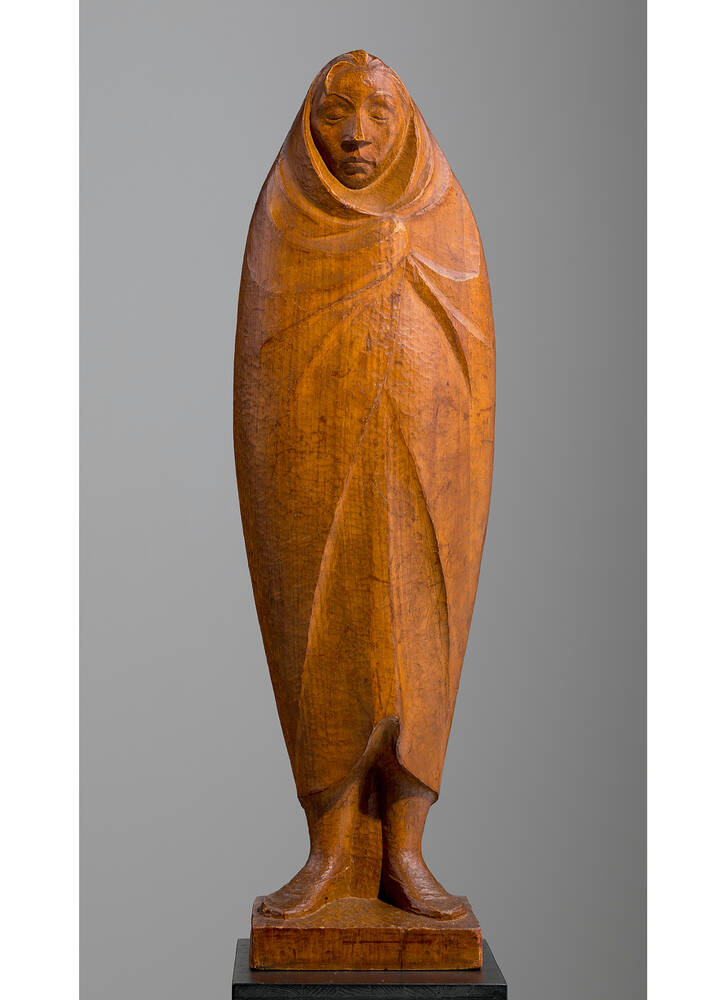“Ernst Barlach is among the most important and best-known German sculptors in modern art in the early twentieth century. Barlach’s ‘Pregnant Girl’ dates from 1924, and embodies all the defining qualities of his art.”
Throughout his life, Barlach was fascinated by the human form. The powerful figures he created are timeless. Here, we see a young, pregnant woman, pensive, withdrawn, absorbed in herself.
Barlach’s striking style was inspired by a key experience in his life. During his travels in Russia in 1906, he was profoundly impressed by Russian folk art and the simple life of the peasants. Curator Astrid Nielsen explains:
“After this journey, he developed a formal idiom which became his signature style, with simplified contours, and a more or less block-like depiction of figures without too many narrative details.”
Under the Nazi regime, many of Barlach’s works were confiscated from museums as “degenerate art” – just as they were in Dresden:
“After 1920, the Dresden Sculpture Collection had a wooden sculpture by Barlach called ‘Das frierende Mädchen’ – ‘The Freezing Girl’. In 1937, this was seized by the Nazis as ‘degenerate art’. Of course, that was a major loss to the collection – and left a considerable gap in the holdings.”
So the joy was even greater when the collection managed to acquire Barlach’s Pregnant Girl sculpture in 2021. In formal terms, this figure is very similar to the Freezing Girl, which today is on show in the Ernst Barlach Haus in Hamburg.
Further Media
Ernst Barlach’s working methods
After acquiring Barlach’s sculpture of a pregnant young woman, this work was systematically studied in our restoration workshop. The findings enabled restorer Stephanie Exner to trace the artist’s working methods:
“Ernst Barlach went to a state arts academy. There, he received the traditional training for sculptors at that time and learnt the classical techniques of modelling and moulding. In 1906, he began working primarily with wood, and largely taught himself the art of wood carving. But as a rule for his sculptures, Barlach always continued to make a plaster maquette – a preliminary model. So first he modelled his work in clay, and then cast it in plaster.”
Barlach also applied the same method to his statue of a young pregnant woman. Once he had made the maquette, he then carved the figure in limewood:
“Barlach did not carve the figure from ONE solid block of wood, but from a sculpture block, as it’s called. The block is made of several pieces or planks of wood glued together, a technique supposed to prevent the wood cracking or splitting.”
As is only too clear, the back of the sculpture was hollowed out – an approach similarly used in medieval wooden sculptures. In those days, removing the heartwood was thought to stop the wood of the sculpture splitting.
“Today, to find Barlach hollowing out the back of his sculpture seems rather surprising – and rather unnecessary. But this is also a unique distinguishing feature across Barlach’s entire oeuvre.”
To finish the figure, he smoothed the surfaces with fine chisels, then gave the light-coloured limewood a coat of shellac and beeswax, adding red and black pigments.
- Location & Dating
- 1924
- Material & Technique
- Basswood
- Dimenions
- Gesamt: Höhe 86,4 cm, Breite 25 cm, Tiefe 16,5 cm
- Museum
- Skulpturensammlung
- Inventory number
- ZV 4381

